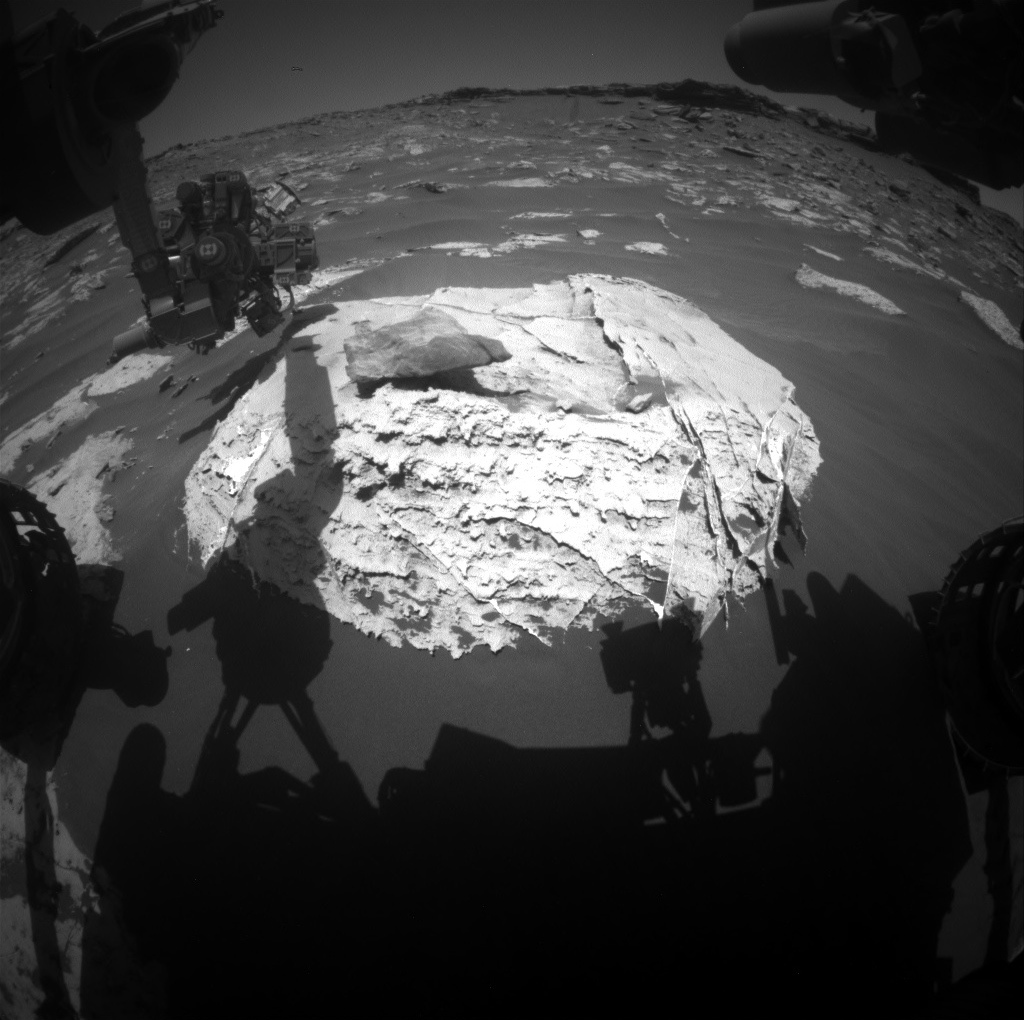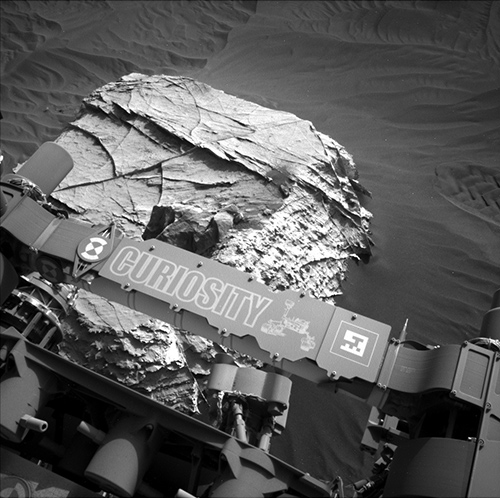3 min read

Today’s blog image features a Hazard Camera image from many sols ago, sol 2659 or 29th January this year in Earth measures. At the time, we were heading uphill, with the steepest climb still ahead of us. My blogging-colleague Catherine had the same block with so many features to explore in her blog that she entitled "Heading for the Bench!" Look back at it and marvel at all the different structures, veins and nodules included. Tosol we are on our way back downhill, and we passed by the same area. As the time was pressing on our way up, we are now taking full advantage of a second serving of this piece of bedrock.
This was our Navcam view on sol 2734, the image was taken by the Navcam. You can compare it with the above image from a few weeks ago.

First, the APXS instrument will study which elements are present in the bedrock. Back on sol 2659 there was only time for a "touch and go" measurement, which are naturally of lower statistical quality than longer overnight integrations and do not allow us to brush the dust off before. The MAHLI camera on the end of the robotic arm will document the measured area after we brush dust off this spot with our DRT tool. Thus, tosol the target "Creig" will be an overnight APXS measurement after DRT of the area, improving the statistics on APXS bedrock measurements at this exciting location. ChemCam did get many bedrock points on the way up, for which reason the team focuses the instrument on the other features in the scene: documenting the workspace with a mosaic that includes all the activities by the chemistry experiments.
The environmental working group has their standard sequence of observations, which include Navcam line of sight, a dust devil movie, crater rim extinction, a dust devil movie and basic tau. This is especially important at this time of the year, since it is about now that the last big dust storm started. DAN, the Dynamic Albedo of Neutrons instrument that measures hydrogen and chlorine, is in the plan, too, in active and passive mode.
Finally, Curiosity is going on a long roll – driving all the way into the valley between the buttes to our next area of interest. Stay tuned to see the buttes from the bottom of the valley again after our exciting climb onto and decent from the high place!
Written by Susanne Schwenzer, Planetary Geologist at The Open University







